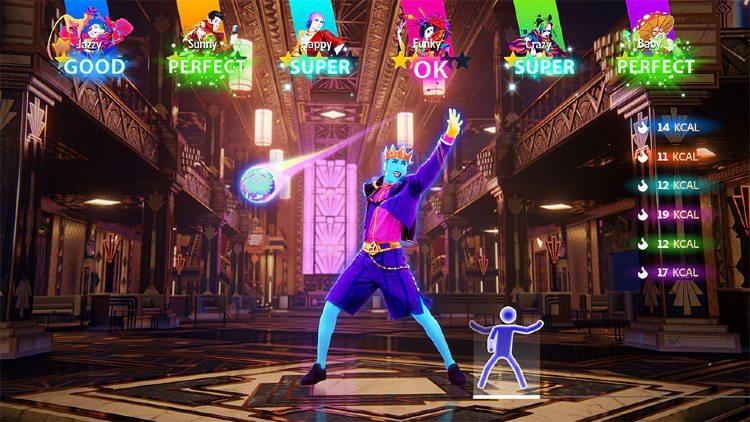
Just Dance is a video game series created by Ubisoft Paris in 2009. With single player and multiplayer modes, Just Dance primarily appeals to younger players and families, both individually and in groups of up to five. Just Dance is accessible through console platforms such as Nintendo Switch, Play Station and Xbox, as well as online platforms such as the AppStore, which are mainly owned and used by the younger audience and/or families, indicating that the platform of choice for the game matches the audience it desires to target. Just Dance resembles our game concept in its focus on dancing as a competitive play but employs a point system rating the accuracy of the dance moves using sensors rather than a dynamic challenge of correctly getting and passing on dance moves. Therefore, Just Dance differs significantly from our game concept mainly regarding the size of the player groups it appeals to, as can be explored through the differences between the two games’ utilization of aesthetic and formal elements- namely the outcomes, resources, players and rules.
Just Dance relies heavily on and the sensual aesthetic of music and dancing to engage its players. Its employment of brightly colored graphics, tactile and motion focused tasks, and well-recognizable audio all combine to create a “sensual high” that make the game pleasurable and therefore appealing, while creating a magical circle that isolates the players from the dimension of reality through music and dance. Although not as intense on sensuality, our game concept also relies on sensual aesthetic, in addition to its main aesthetic of challenge, to engage players. Yet, our game concept is not as unforgiving as Just Dance regarding its employment of outcomes- losing a dance challenge between a circle of friends can be considered a more negative experience than losing a round of Just Dance, highlighting a significant difference between our game concept and Just Dance’s use of aesthetics and conclusion as a formal element. Moreover, Just Dance differs significantly from our game concept regarding is vast resources of time, varying player modes and power-ups, wider range of actions enabled by computer generated moves, and special terrain/challenges. Most of these resources are enabled by Just Dance’s online platform, which provides flexibility not only in terms of resources, but also in terms of players, where users can switch between different player interaction patterns, from player vs game to player vs player, to multilateral competition, to team vs team. On the other hand, our game relies mainly on the players and action as a resource and is bound by the constraints of its physical platform regarding the roles of players and player interactions, where players can only engage in a multilateral competition. Even though Just Dance’s employment of “players” and “resources” as formal elements of design enable adjustability towards players/users with different objectives and interaction preferences, they also pose constraints when it comes to the number of players and more complicated (and more rapidly changing) set of rules.
Our game concept comes forward in its simplicity and inclusivity, though not flexibility, with its physical platform enabling higher numbers of players to join and the simpler set of rules lead to a lower bar of entry, making it easier for new players to learn and join. Therefore, whereas Just Dance appeals to individuals, pairs and smaller groups, these difference between its utilization of formal elements and challenge as an aesthetic, make our game concept a more suitable candidate for larger groups.



